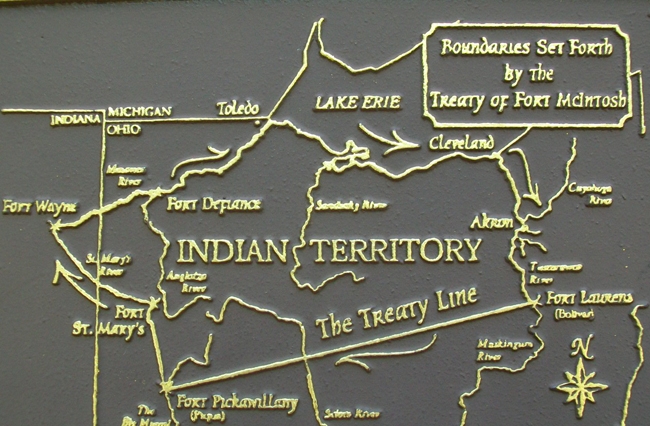In 1700 the Indians were still here. Then they began relinquishing their lands east of the Portage path in 1785, and twenty years after that they gave up much of the ground west of that historic trail. After the treaty many of the Indians left, but there were still villages along the banks of the Cuyahoga.
In June of 1812 the Indians of what is now Cuyahoga Falls began acting very mysterious to the settlers. It was obvious that something was in the works. The first assumption was that a massacre was pending. Alarm spread from settlement to settlement. Pioneers gathered their families in fortified places for protection. Every preparation for defense was made and scouts were sent out to watch the activities of the Indians. But instead of attacking the whites, the Indians simply left. In the middle of the night, they disappeared entirely. After becoming friends with the whites, they had simply chosen to move out rather than attack them as they were instructed to by the British.
They had joined the British in the war of 1812. It was the last of any major Indian occupation of what is now Summit County.
After the war was over, five Indians made camp at the great bend of the Cuyahoga. After Indian fighters killed four of the five the last one was spotted over looking the banks of Silver Lake on Rt 59. This had been their favorite location. Their attachment to the lake almost amounted to worship. But as silently as he came, the Indian disappeared. He yielded to the white man the Paradise of his domains.
The first legitimate settlers, coming to take over the land to which they had acquired legal title, found the squatters here. There was no animosity where the claims overlapped. There was room for everyone.
The settlers were mainly from New England and Pennsylvania. But there were squatters from Virginia and other neighboring states.

